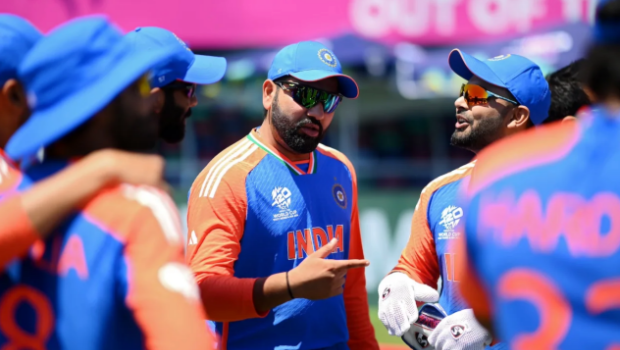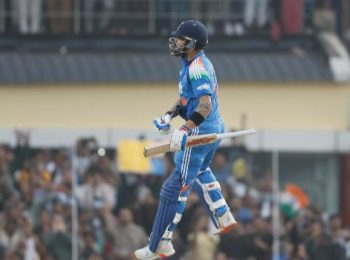New Zealand have cemented their place in cricket history with an extraordinary Test series victory over India, marking their first-ever series win in India—a remarkable achievement for any team, especially considering they were missing Kane Williamson. India, renowned for its strength on home soil, now face serious questions about the state of their Test team and future strategies.
One of the most critical decisions of the series came early with a toss choice that, while ultimately proving poor, set the stage for New Zealand to establish momentum. This moment instilled a sense of self-belief and confidence in New Zealand that would carry them through the entire series. With Tim Southee stepping down and Tom Latham taking over as captain, New Zealand faced uncertainty going into the series. However, the leadership transition was handled masterfully, with the team quickly finding their rhythm under Latham’s helm.
The Resilience of New Zealand
This New Zealand squad has arguably become the most resilient Test team in the world, capable of adapting to a range of challenging conditions. Throughout the series, they displayed a level of grit and adaptability that few other teams can match. On pitches varying from seaming tracks to spinning surfaces, New Zealand showcased their ability to adapt and dominate, proving that resilience and unity can be as crucial as raw talent. Though they may lack the sheer volume of world-class players compared to some sides, their character and fighting spirit have placed them in a league of their own.
India face tough questions
India must now confront tough questions, especially regarding their senior players, Virat Kohli and Rohit Sharma. Both iconic figures in the cricket world, Kohli and Rohit were unable to contribute significantly to India’s efforts. There is mounting pressure on them to rediscover their form, particularly as India prepares for its upcoming series against Australia.
My readers know that I’ve often spoken how Shubman Gill could be a stronger option as an opener alongside someone like Yashasvi Jaiswal, though India seems likely to stick with Rohit in that role. Perhaps moving Rohit down to three and bringing Shubman up to open could ease some of the pressure on Rohit. However, while that might be a strategic move, it could also be perceived as a step back when they face Australia. Realistically, though, I don’t expect them to make that change.
For me, this isn’t about changing the lineup or personnel. It’s not a matter of team selection as much as it is about finding a way to get each player back to their peak form. The focus needs to be on preparation, mindset, and resilience rather than simply swapping out personnel.
I don’t think so we can skip talking about Indian pitches when reviewing the India vs New Zealand Test series. It seems that domestically, they’re often quite flat and sometimes even grassy, rather than being true spinning tracks. This raises a broader question—are India’s emerging players getting enough exposure to high-quality spin? Perhaps it’s time for Indian cricket to reassess the preparation of its domestic pitches to better prepare players for international conditions.
Ironically, even in the subcontinent, these flatter, grassier pitches might not be giving India’s top players the practice they need. And when pitches are prepared to turn dramatically, like we saw during the recent England series, it sometimes plays into the opposition’s hands. In the long run, India may benefit from preparing flatter pitches, even for home Test series. But this is really part of a much larger discussion.
Need for warm-ups and a solid defensive technique
I understand India won’t be playing any warm-up games before starting the Test series against Australia, opting instead for center-wicket practice sessions. For those of us from an earlier generation, these preparatory games seemed crucial and carried real significance.
Modern players may view it differently, but if you look back at past tours, especially the last few series in Australia, warm-up games against Cricket Australia sides were part of the routine. Those matches laid the groundwork for the two impressive series India recently played in Australia.
I think there are valuable lessons here, particularly for the batters. Batters must constantly push themselves to adapt their techniques and develop new strategies, which will likely be put to the test in the upcoming months for India.
The rise of T20 and one-day cricket has influenced batting techniques, with aggression often prioritised over patience. This series highlighted the importance of a solid defense in the Test format. Modern players must strike a balance between their aggressive instincts and the need to absorb pressure in challenging situations.
I recall a memorable moment between Virat Kohli and Jimmy Anderson during a Test in Chennai—not the most recent England tour, but the one before that, probably four or five years ago. Anderson was bowling exceptionally well with reverse swing, and I was right behind the action, able to see every movement of the ball and Kohli’s setup to play it.
It was a true masterclass in precision, judgment, and footwork. Kohli hardly scored for about half an hour, but he was handling one of the toughest challenges from one of the world’s finest bowlers. Even though it didn’t push the game forward, it was a brilliant moment—Kohli navigating his way through a demanding period of play.
When Anderson’s spell ended, Kohli resumed scoring, having successfully weathered the pressure. Moments like these showcase the art of absorbing pressure, which sometimes seems overlooked in the modern game. There’s often this idea now of counter-attacking to throw bowlers off their rhythm. But I believe there are still times when holding firm and soaking up pressure is essential, and this is something today’s batters could benefit from considering more often.
Looking Ahead: A Moment for Introspection
Looking ahead, India will face extra bounce on Australian pitches, which poses a new challenge. The Indian batters need to draw lessons from previous tours, especially looking at Cheteshwar Pujara’s approach—his resilience and control during the middle overs were key.
Reflecting on the recent series against New Zealand, if coach Gautam Gambhir, captain Rohit, and other seniors step back, honestly assess what went wrong, and apply those insights, there’s no reason India can’t bounce back swiftly. They’re not a struggling side; they’ve simply had a rough patch. This is a valuable opportunity for growth.
I’d bet on Virat Kohli and Rohit Sharma to have an outstanding series against Australia. Given their introspective nature, they’re likely to analyze their performances deeply, identify improvements, and come back stronger. If I were Australia, I’d be cautious—India’s top players will dig deep for answers.
India’s loss to New Zealand offers valuable lessons, both in terms of technical adjustments and broader preparation strategies. For New Zealand, this historic victory exemplifies the importance of resilience and unity.
As Kohli and Rohit work to rediscover their form, and the Indian team learns from its experiences, the upcoming series against Australia promises to be an opportunity for redemption. With the right adjustments, India can turn this series loss into a stepping stone towards future success in Test cricket.



























